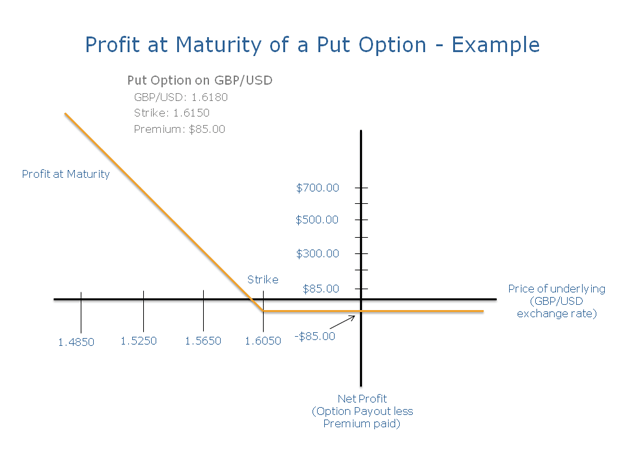Buying options (calls or puts) on currencies allows the investor to benefit from unlimited upside potential with limited downside risk. The maximum possible loss on option positions with GCI is the price (the "premium") paid for the option, regardless of how much and in which direction the underlying currency moves. In the case of a call, the upside is unlimited and will increase as much as the underlying exchange rate increases, as illustrated below:
In the case of a put, loss on option position is also the price (the "premium") paid for the option, regardless of how much and in which direction the underlying currency moves. The upside is unlimited and will increase as much as the underlying exchange rate decreases, as illustrated below:

You can calculate the profit at maturity of any option you buy as follows:
Call Option: Profit = (Price of underlying instrument at expiry - Strike) x Tick Value - Premium.
For example, let's say that you bought one call on EUR/USD with a Strike of 1.4800 for a premium of $150. At expiry, EUR/USD is 1.5400. So the profit is (1.5400 - 1.4800) x $1.00 - $150; this means 600 pips x $1.00 - $150 which equals $600 - $150 = $450. That's a $450 profit on a $150 investment.
Put Option: Profit = (Strike - Price of underlying instrument at expiry) x Tick Value - Premium.
For example, let's say that you bought one put on GBP/USD with a Strike of 1.6000 for a premium of $170. At expiry, GBP/USD is 1.5250. So the profit is (1.6000 - 1.5250) x $1.00 - $170; this means 750 pips x $1.00 - $170 which equals $750 - $170 = $590. That's a $450 profit on a $150 investment. GCI allows option trading on up to 100 lots at a time.
Next: Closing Your Options Positions >